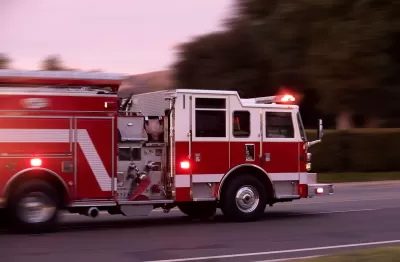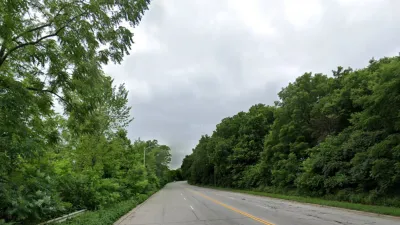Despite common concerns that narrower traffic lanes and bike infrastructure can slow emergency response, response times in one study didn’t change.

A study that sought to quantify the impact of road diets on emergency response times found that “there was virtually no difference in emergency response travel time (in min/km) after a road conversion compared to before, both in total and when they looked at specific road diets.”
As Jonathan M. Gitlin explains in Ars Technica, a research team from the University of Iowa surveyed first responders. Roughly half of the first responders surveyed believed there was no change in response time, while a third believed response times slowed down and 16 percent thought response times became faster.
The team then looked at specific response times from three fire districts in Cedar Rapids, Iowa where road diets were installed, finding no change in response times. The study is an important part of the debate over traffic calming tools such as lane width reduction, which has been shown to improve traffic safety — thus also reducing the need for emergency response to traffic crashes.
FULL STORY: Bike lanes and narrowed streets don’t slow emergency vehicles

Planetizen Federal Action Tracker
A weekly monitor of how Trump’s orders and actions are impacting planners and planning in America.

Congressman Proposes Bill to Rename DC Metro “Trump Train”
The Make Autorail Great Again Act would withhold federal funding to the system until the Washington Metropolitan Area Transit Authority (WMATA), rebrands as the Washington Metropolitan Authority for Greater Access (WMAGA).

The Simple Legislative Tool Transforming Vacant Downtowns
In California, Michigan and Georgia, an easy win is bringing dollars — and delight — back to city centers.

The States Losing Rural Delivery Rooms at an Alarming Pace
In some states, as few as 9% of rural hospitals still deliver babies. As a result, rising pre-term births, no adequate pre-term care and harrowing close calls are a growing reality.

The Small South Asian Republic Going all in on EVs
Thanks to one simple policy change less than five years ago, 65% of new cars in this Himalayan country are now electric.

DC Backpedals on Bike Lane Protection, Swaps Barriers for Paint
Citing aesthetic concerns, the city is removing the concrete barriers and flexposts that once separated Arizona Avenue cyclists from motor vehicles.
Urban Design for Planners 1: Software Tools
This six-course series explores essential urban design concepts using open source software and equips planners with the tools they need to participate fully in the urban design process.
Planning for Universal Design
Learn the tools for implementing Universal Design in planning regulations.
Smith Gee Studio
City of Charlotte
City of Camden Redevelopment Agency
City of Astoria
Transportation Research & Education Center (TREC) at Portland State University
US High Speed Rail Association
City of Camden Redevelopment Agency
Municipality of Princeton (NJ)





























